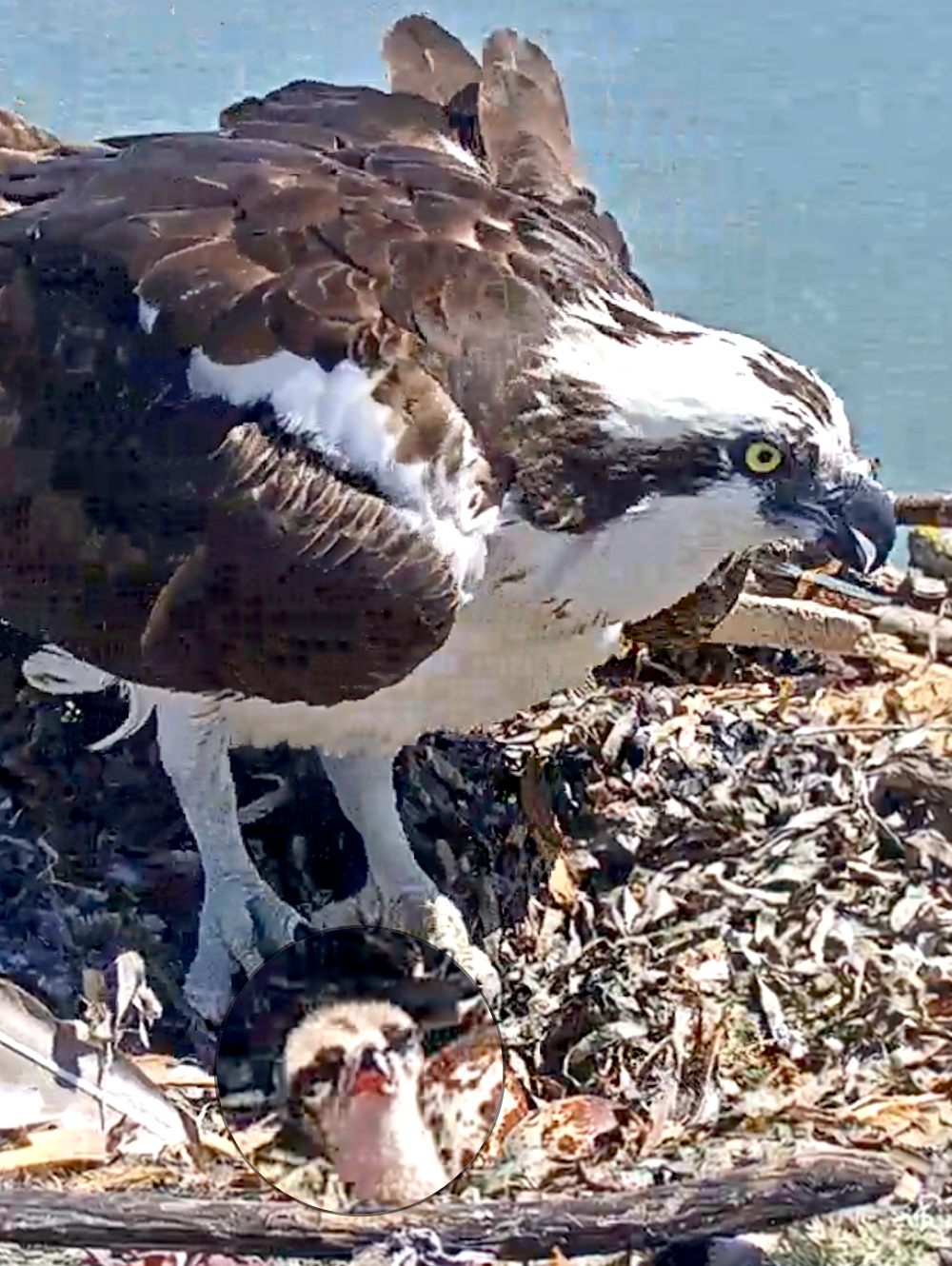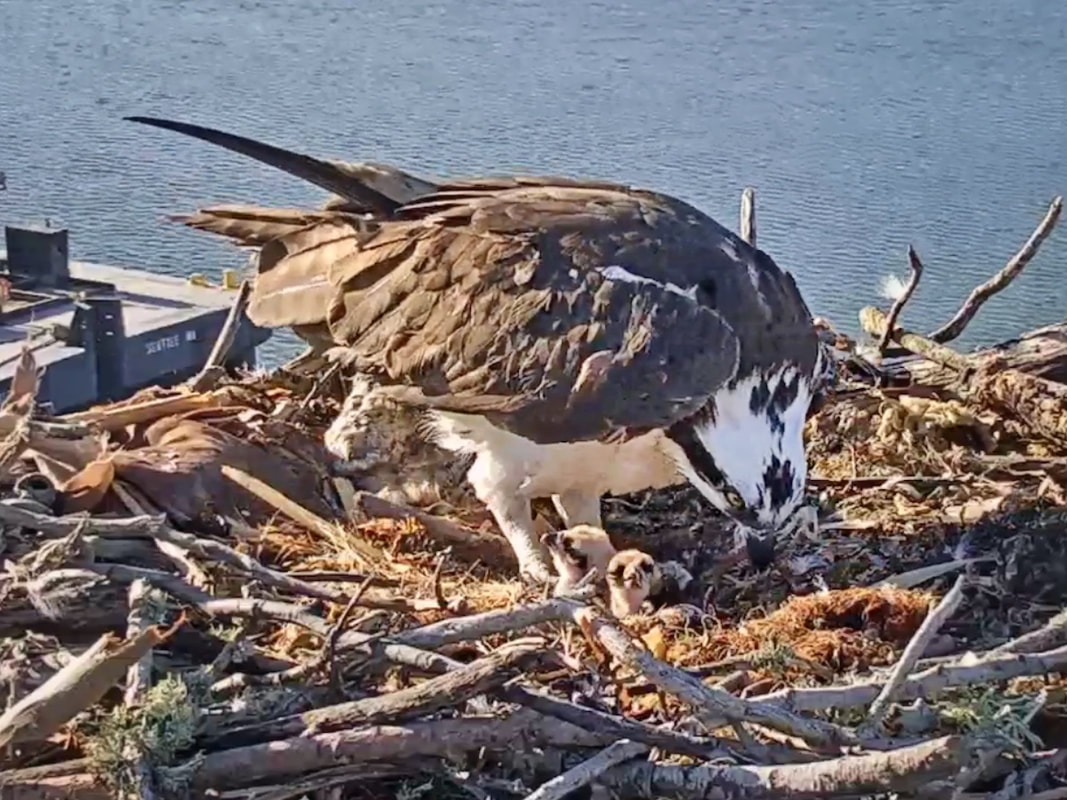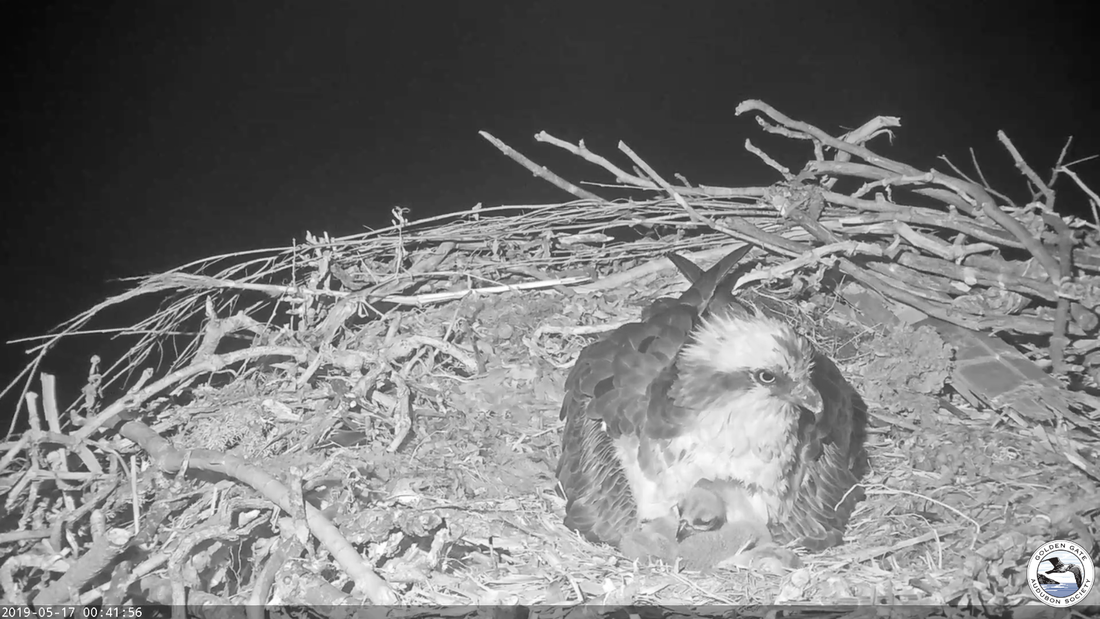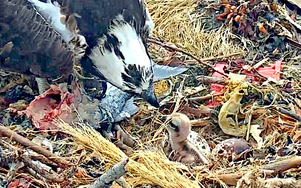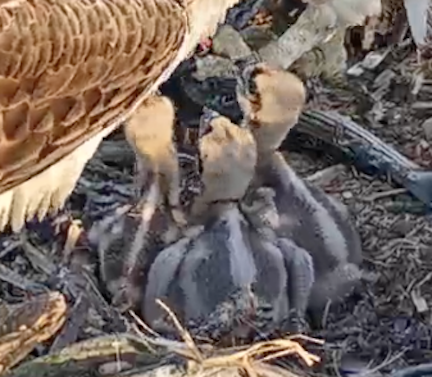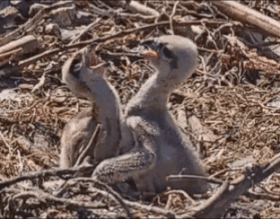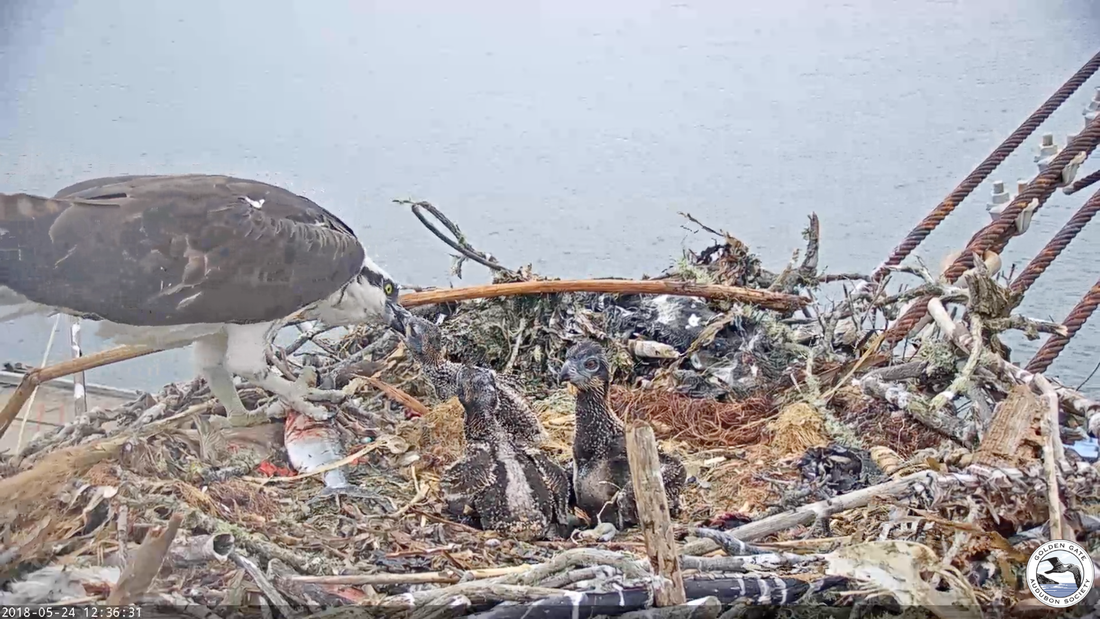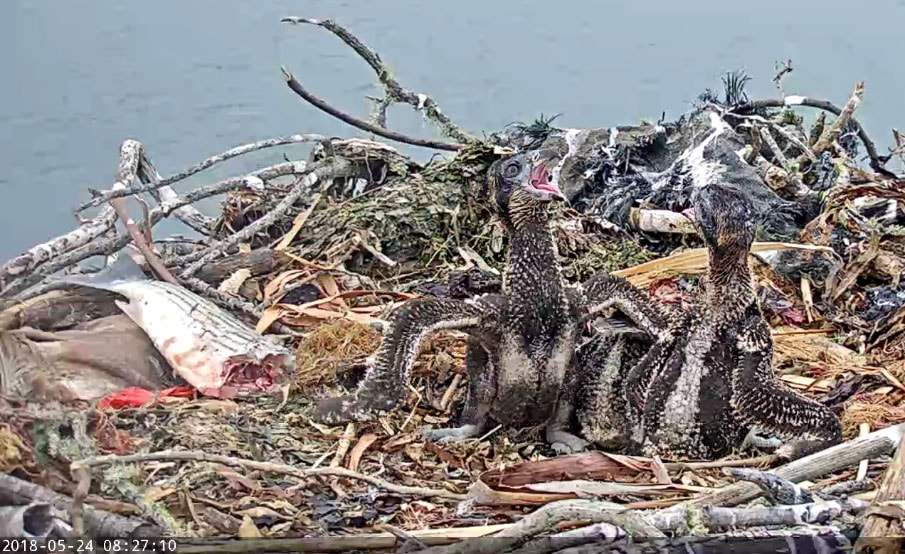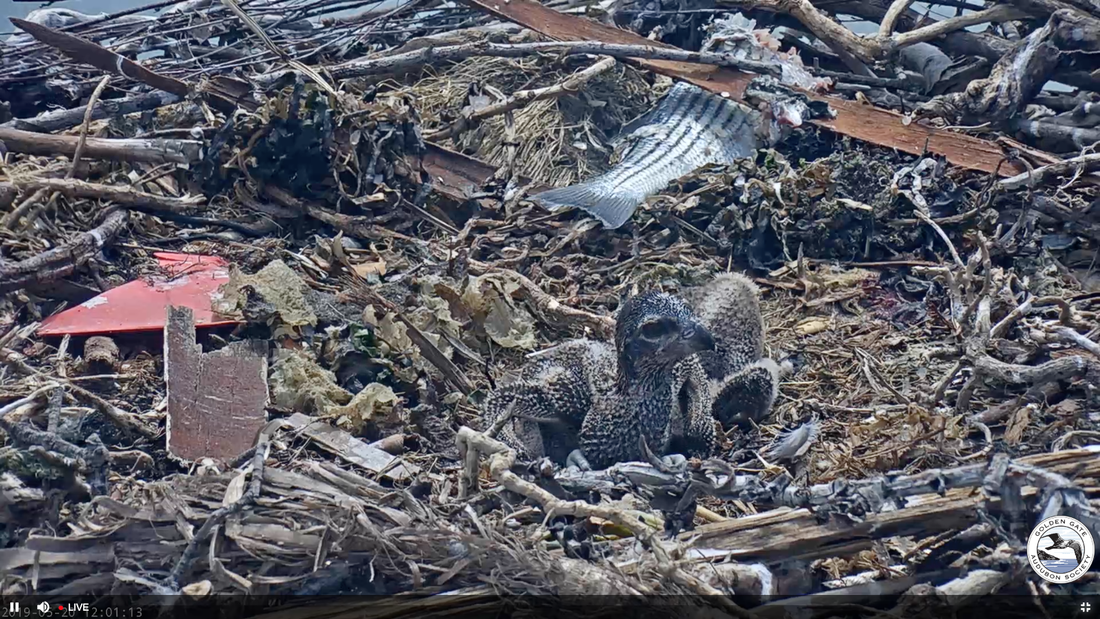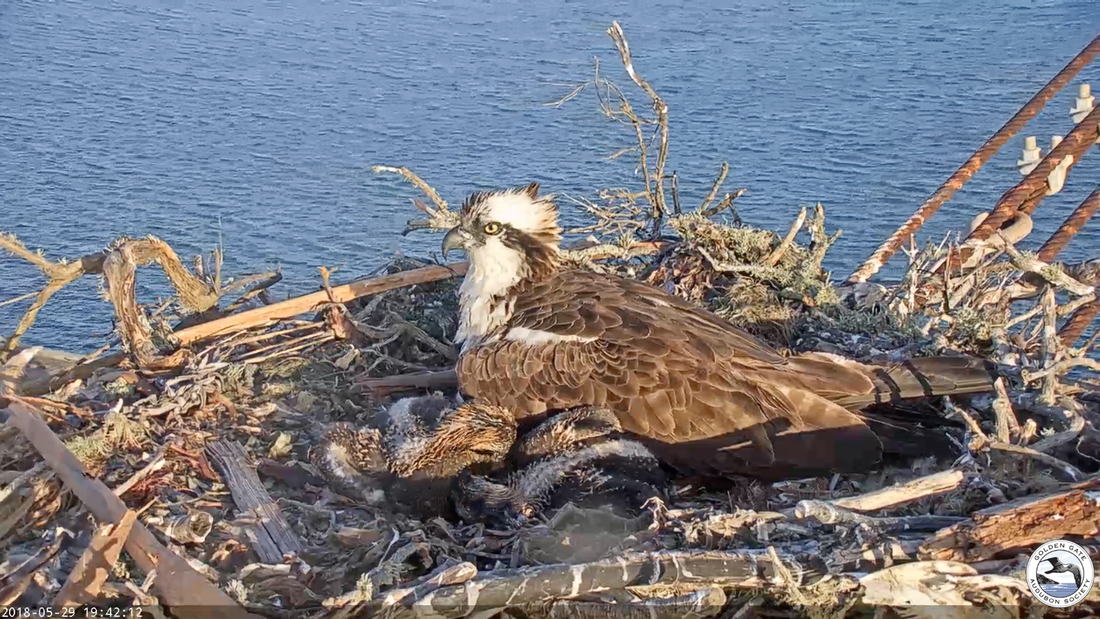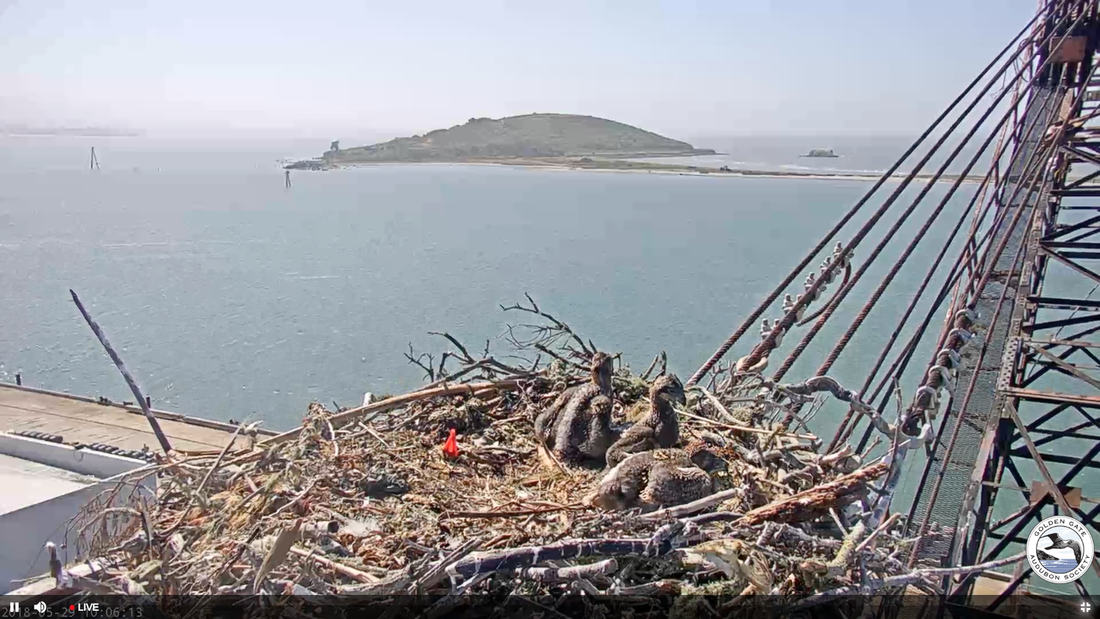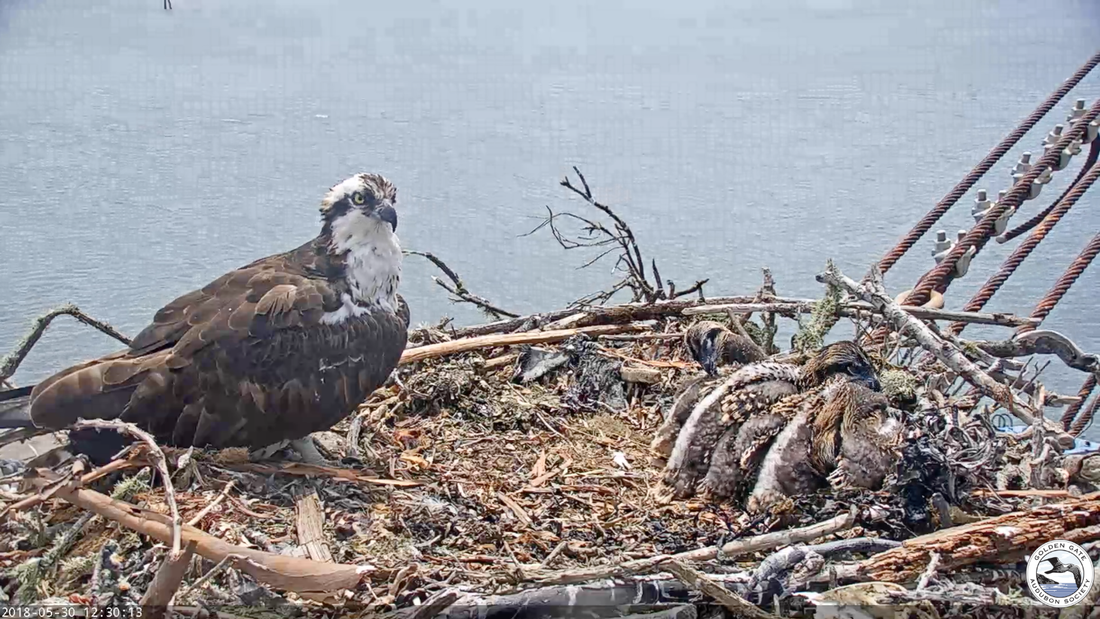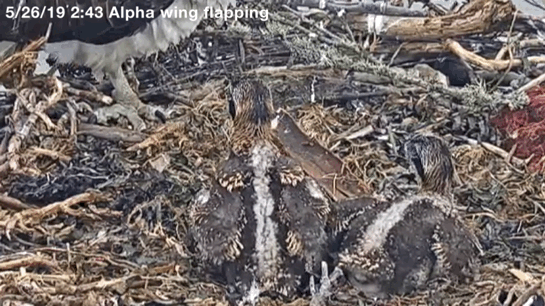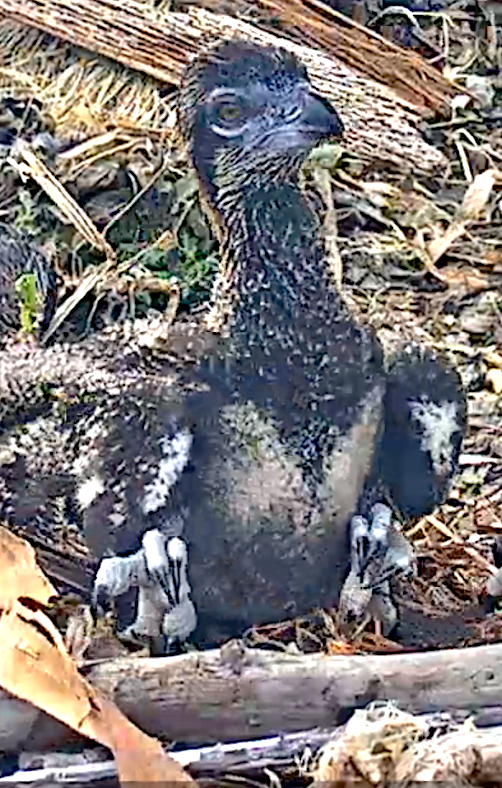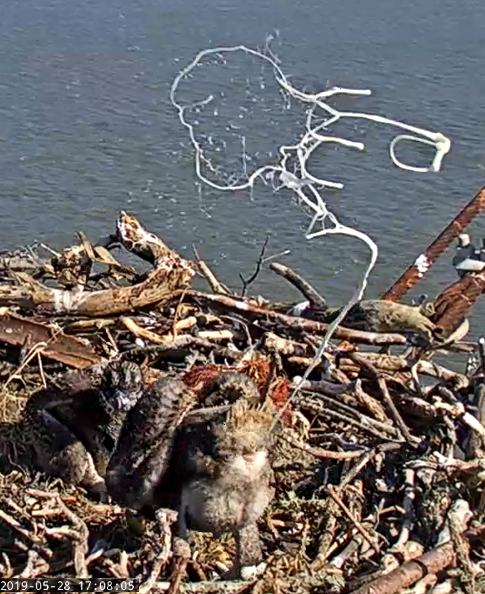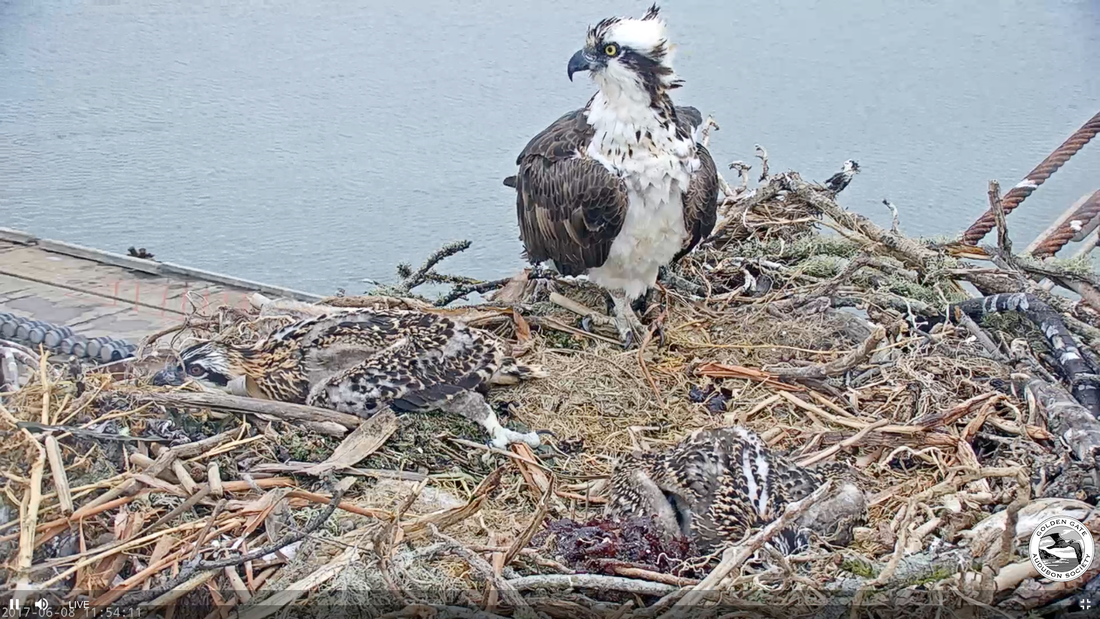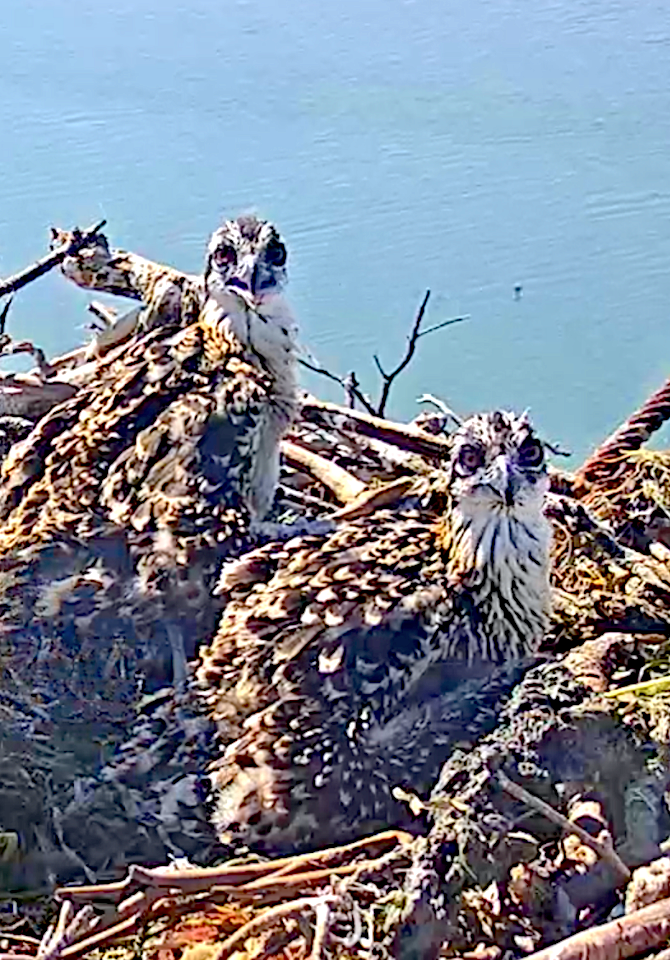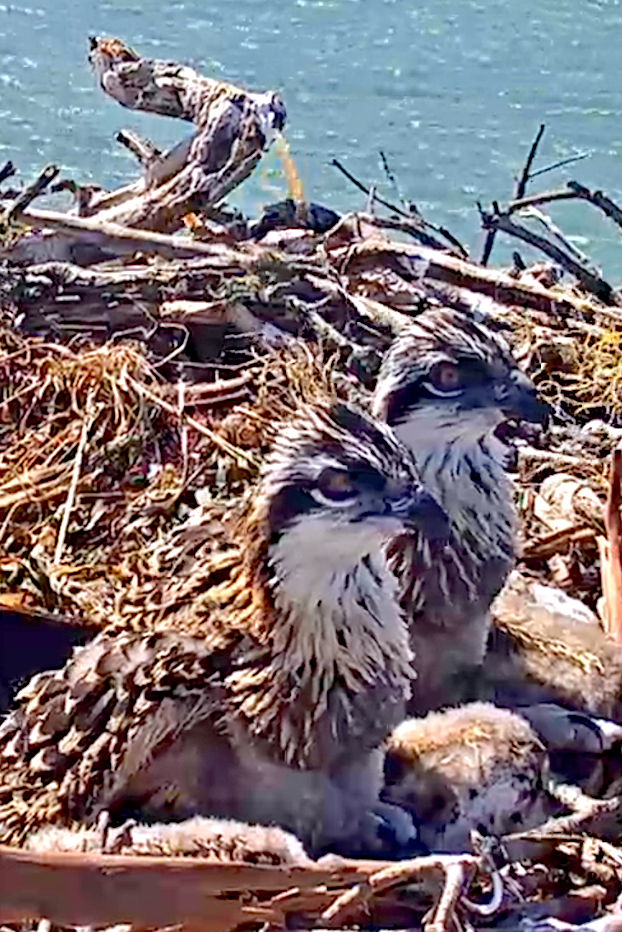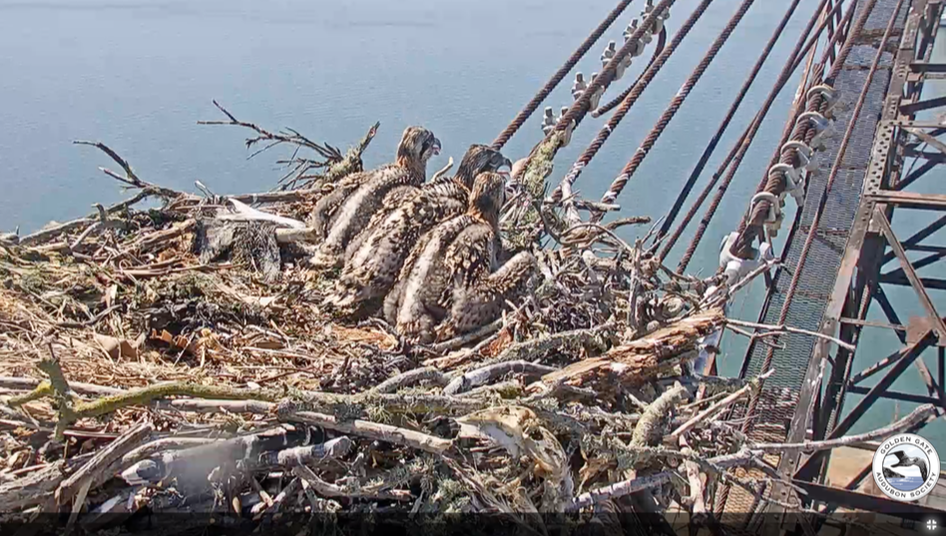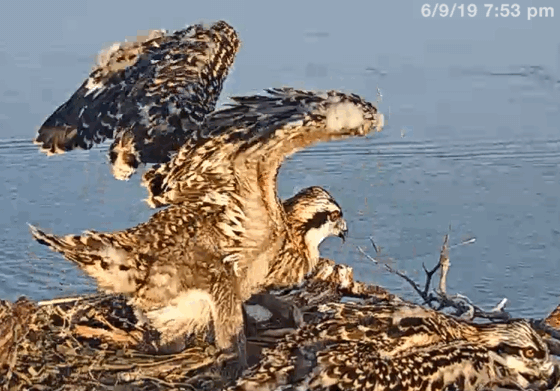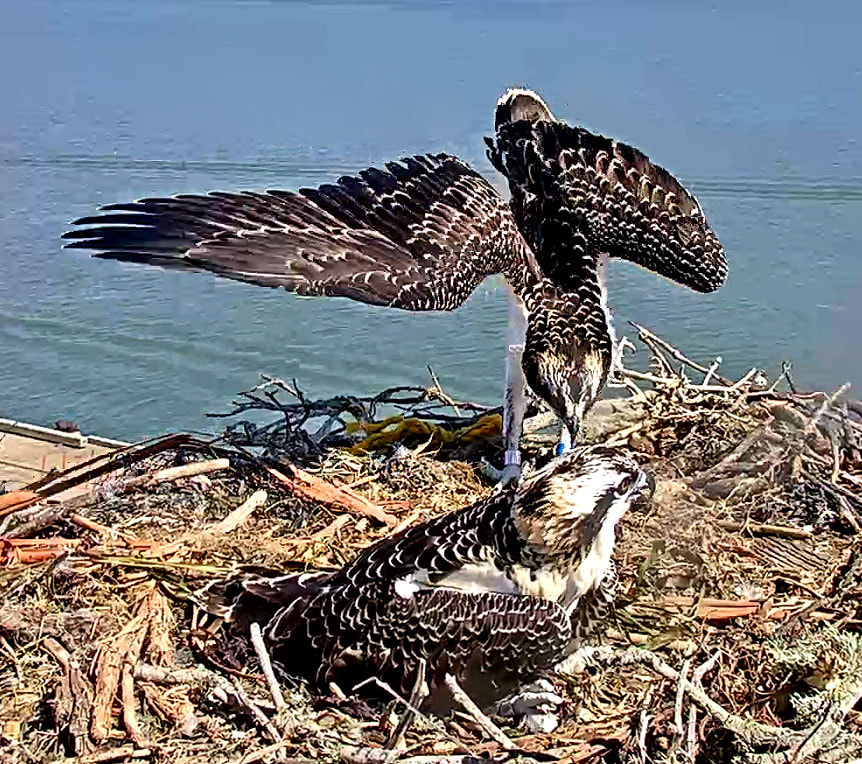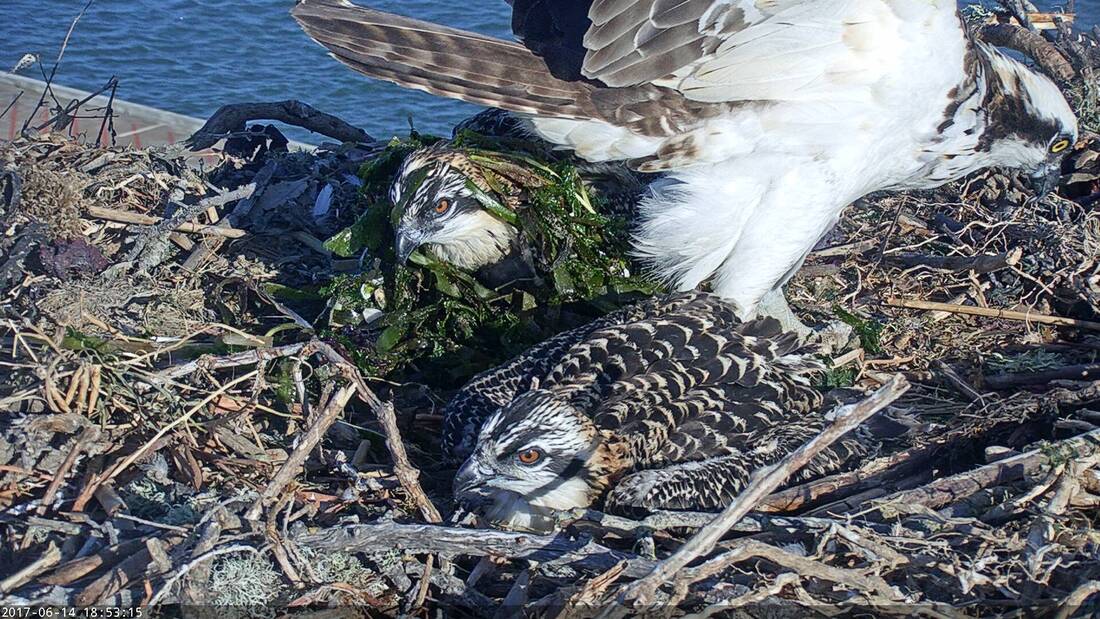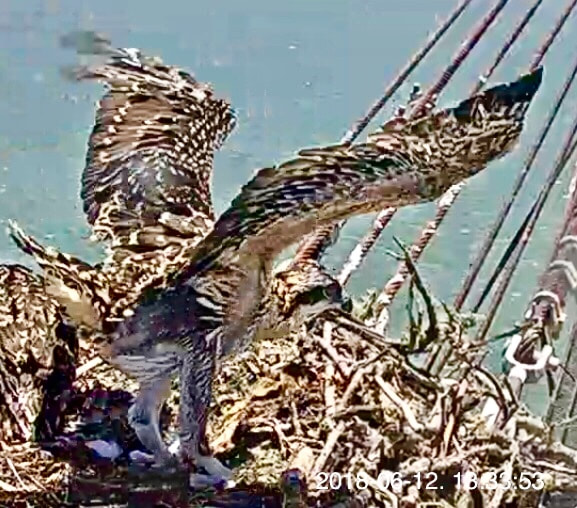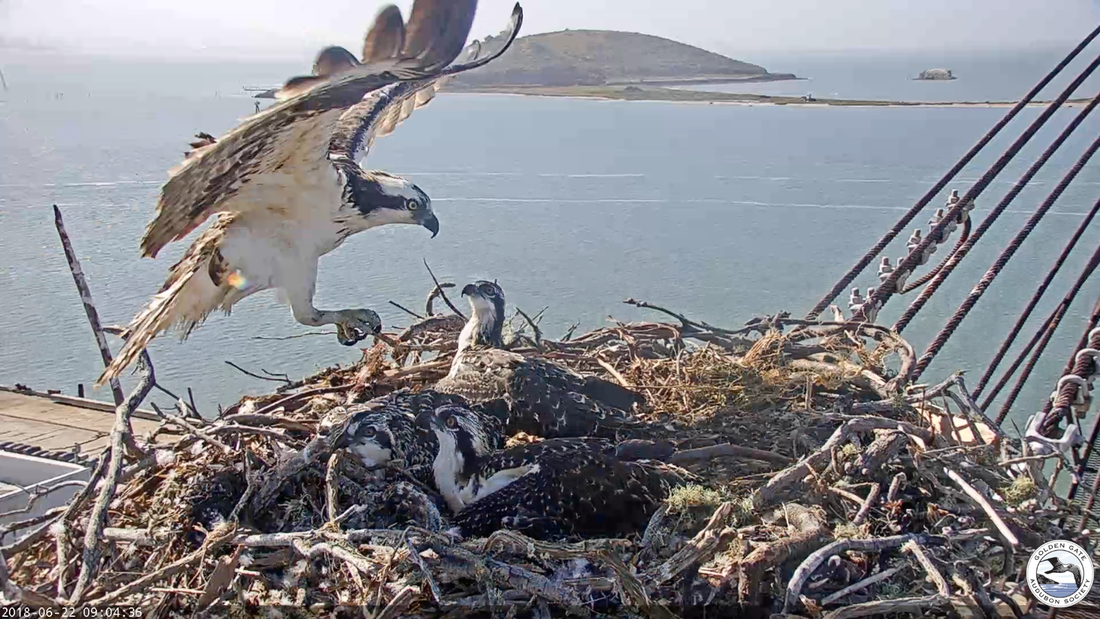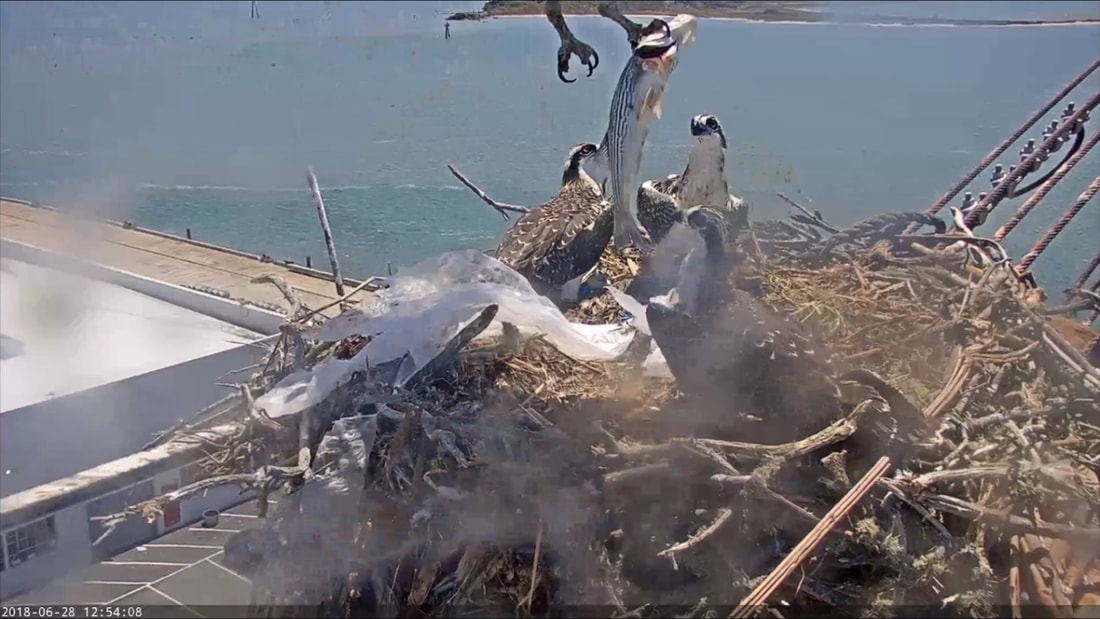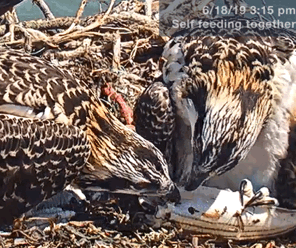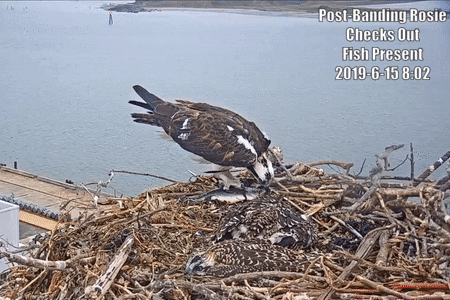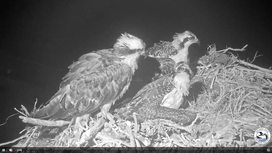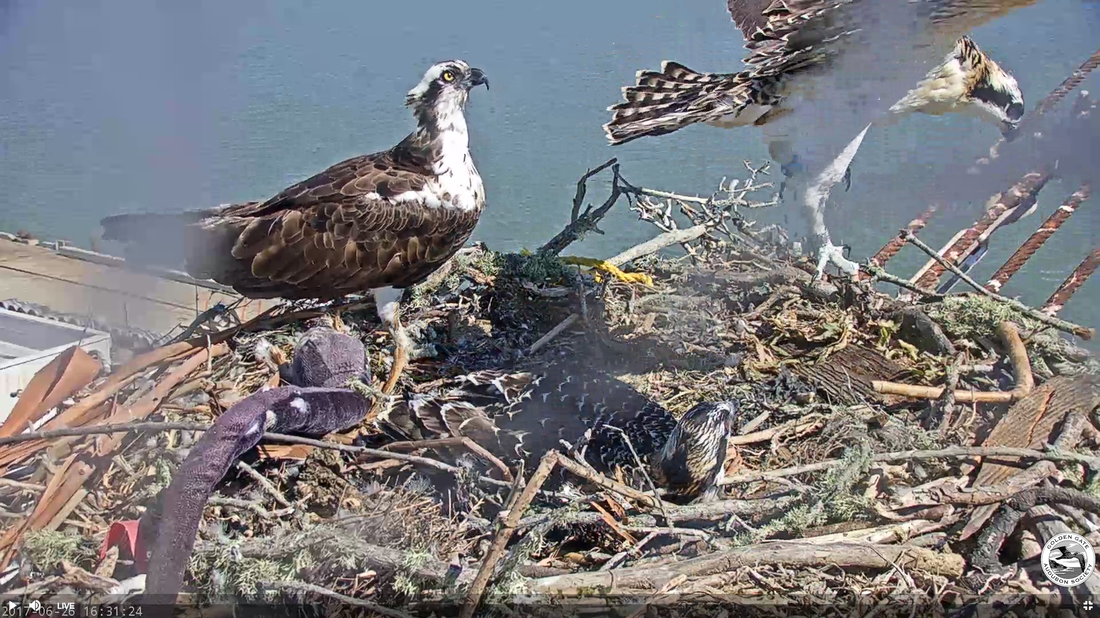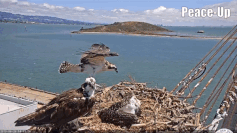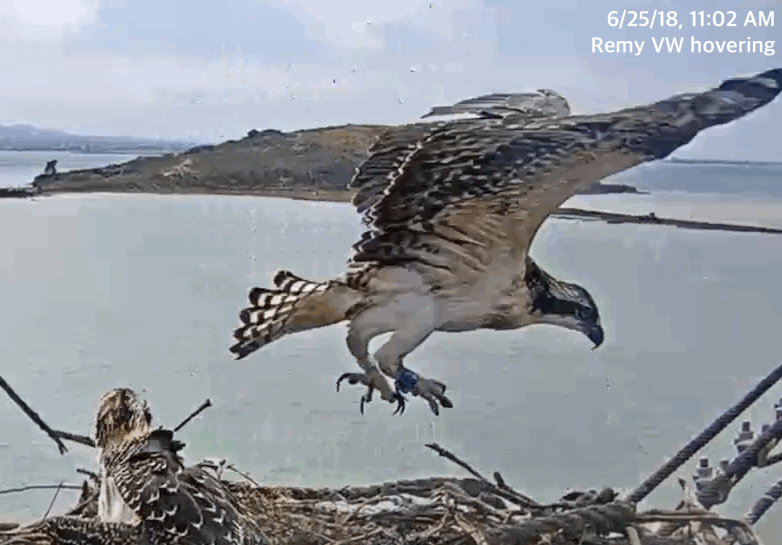The chicks hatch after 36-40 days of incubation. The first chick may have a longer incubation so that it hatches closer to the others. The mother accomplishes this by sitting on the egg less and thus it is not as warm. A chick hatching too long after the others will be at a disadvantage, may not get enough nutrition, and may not survive.
| The first week after hatching is spent under the mother. The chicks are fairly naked, covered with a soft down, and susceptible to cold. The chick sits up with its head bobbling, beak open for food. Rosie, and occasionally Richie, places a bit of fish in the chick's beak. At first this is hit or miss, but the chick quickly learns to accept the fish bit and swallow it. When sated, it lies down in a food coma and sleeps. This is repeated when the next fish arrives. Richie the provider has to up his game and provide more fish now. (see the fish chart). |
By week 2, the chicks' necks are stronger and they have learned to feed. They spend more time out from under Rosie but still sleep under her. They begin to make peeping noises and they begin to develop dark down. They also may compete a bit with each other, by bopping each other. This has varied by the year. Whirley, the elder, bopped her baby brother. The three chicks in 2018 engaged in some of this. In 2019, the two surviving chicks were surprisingly docile towards each other, even sharing at feeding time.
In week three, the chicks begin to develop pin feathers, causing them to look a bit like little dinosaurs. They become aware of their large wings and often stretch them. There is no more fighting. They have grown too large to fit under Rosie, so they sleep next to her. And they are more immune to the vagaries of the weather. They poop dramatically, not yet having learned to control the direction. They still mostly sleep and eat but are beginning to take an interest in the world around them. They begin to walk around the nest, on their knees. Their legs are not yet strong enough to walk on their feet. Rosie feels comfortable leaving them on the nest alone for short periods of time.
In week 4, the feathers come in. The chicks are very itchy(presumably) and preen a lot. They move around the nest on their knees and watch the world off the nest more, moving their heads from side to side to learn to focus. (for information on this, see Poole).They begin to stretch their wings.But they still sleep a lot as well. They still poop indiscriminately but are beginning to learn. (In 2019, miraculously, the POG disappeared, thanks to our new screen washer). And their parents continue to feed them, tearing off increasingly larger pieces of fish to place in their beaks.
By this time, the chicks are growing up. They have reached much of their body weight and are hard to tell apart from the adults, except for the white on their wing tips and the different colored eye. They walk on their feet now and stretch their very long wings. They practice flapping. And they begin to self feed, grabbing bites from under Rosie as she feed them, or grabbing the entire fish and dragging it off. They are banded in mid-June and receive their initials (USFWS) and their permanent names, suggested and voted on by chatters and Facebook enthusiasts. (Banding is not photographed, so no pics here of that) A few days before fledging, they begin to hover over the nest for brief periods.
